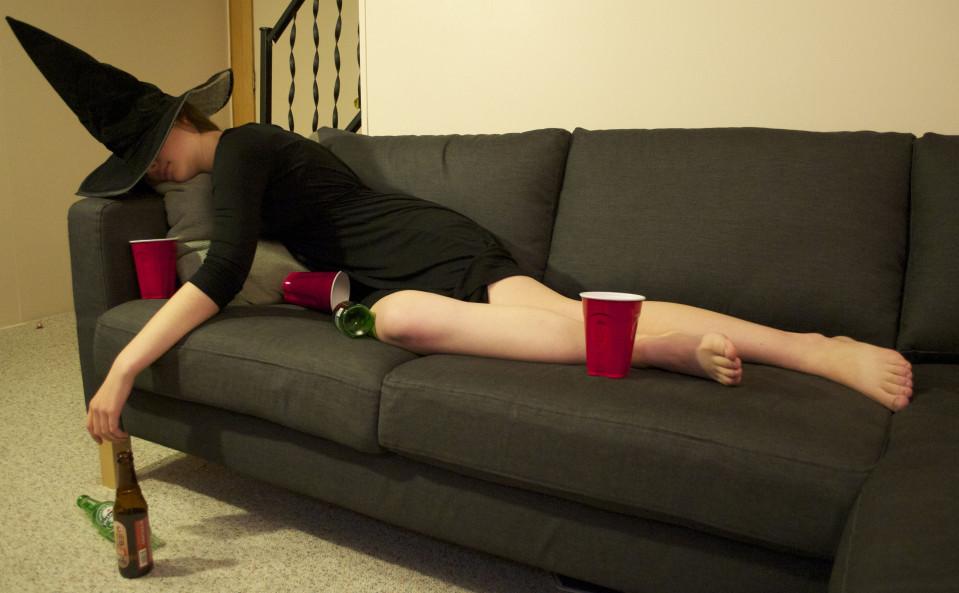Halloween gives way to wasted youth
New study shows increase in teen binge drinking
October 23, 2013
Too old to trick or treat, too young to legally drink. Some teens have outgrown childhood Halloween traditions and now turn to binge drinking instead.
With Halloween quickly approaching, some students may encounter more opportunities for parties involving alcohol, according to Debbie Lickteig, an emergency room nurse at the University of Minnesota Amplatz Children’s Hospital. Lickteig, said the number of alcohol related patients seen in the ER increases by 50 percent around Halloween.
“We see a lot of cases of what we call alcohol overdosing. On average about five patients a night on a weekend,” she said. “(On Halloween), I would say we see about 10 a day, double the patients.”
Junior Colin Monicatti said he thinks teen alcohol consumption increases on Halloween, because of an increase in partying.
“Halloween is one of the biggest times a year to throw a party, so binge drinking is a given,” he said. “It seems like most of the people I know have more than just one or two beers.”
The Centers for Disease Control and Prevention (CDC) view underage drinking as a major national health concern. According to the CDC, alcohol is the most commonly used and abused drug among youth in the United States and statistics show drinking rates are steadily increasing.
A study by the University of Michigan published September 2013 found more than one in 10 high school seniors have participated in extreme binge drinking in the last two weeks.
Extreme binge drinking is defined as having 10 or more drinks in one sitting, a trend that is becoming more popular among high school students, according to the study.
The study also showed 5 percent of high school seniors report indulging in more than 15 drinks in one sitting, enough to result in alcohol poisoning.
Senior Naris Uzzell said he believes underage drinking is a problem among teens in the community, although he doesn’t feel students need an occasion such as Halloween to drink.
“People drink every weekend because of the easy access to alcohol,” he said. “No one needs an excuse.”
Regardless of how students like Uzzell view binge drinking, Lickteig said Halloween is a concern for those in the medical field. Binge drinking causes long-term health problems including brain and liver damage, not to mention injuries and death caused by careless drunken mishaps.
“Short term, you have changes in your level of consciousness, you have the inability to protect yourself, impaired driving and decision making,” Lickteig said. “All of that is the immediate stuff. A lot of the kids get combative. The long-term effect is respiratory stuff, you can stop breathing without dying. It’s called respiratory depression.”
Every year, more than 189,000 alcohol-related ER visits by patients under the age of 18 occur, and alcohol is responsible for the premature deaths of more than 4,700 people under 21 years of age, according to the CDC.
Dr. Gregg Savitt, a pediatrician at Partners in Pediatrics, said binge drinking causes severe damage to brain development.
“Your brain is still developing into young adulthood,” Savitt said. “Binge drinking can cause memory impairments, persistent changes in the brain that lead to difficulty with muscle coordination, confusion learning and memory problems. It can cause scarring of the liver as well as hepatitis, which is liver inflammation.”
Savitt said he believes these consequences are more prevalent in teens than adults since teens don’t often comprehend the amount of alcohol they intake.
“Teens tend to underestimate the amount they drink,” Savitt said. “When they do self-reporting studies the average is around nine drinks in the teenage and young adult group. But again, I think this reflects under-reporting by participants in these studies and under-reflects how much they really drink.”
Lickteig said since minors are not served at bars, they don’t drink alcohol in precise amounts. Instead of having a few drinks, teens will share a bottle of hard alcohol between a couple friends, making it difficult to keep track of intake.
“Most patients don’t know how many drinks they’ve had,” Lickteig said. “If they are able to talk, which usually isn’t the case, generally a large amount of liquor. They get a bottle of liquor and split it between three or so people and it ends up being about a cup and a half of liquor.”



